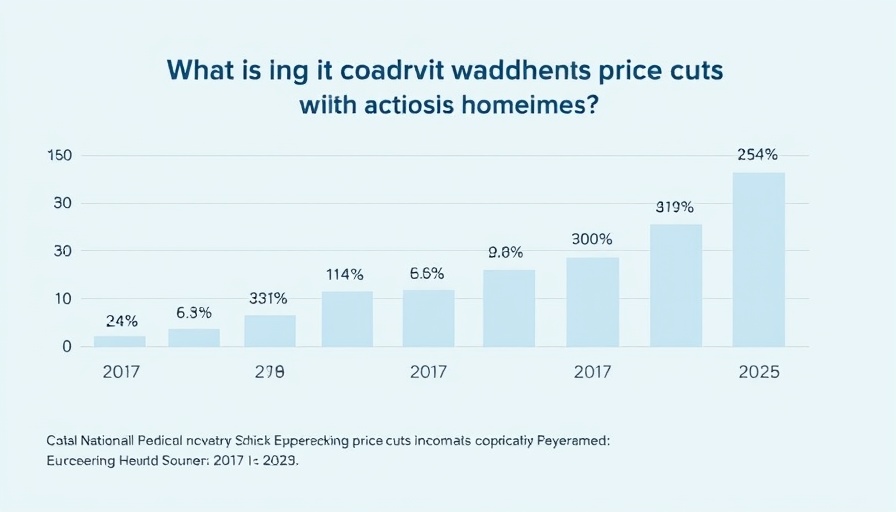
Housing Market Inventory Sees Record Price Cuts
The U.S. housing market is undergoing a significant shift, with the inventory of homes for sale experiencing a decade-high rate of price cuts. In March 2025 alone, over 302,260 homes—representing a staggering 33.9% of all listings—saw a price reduction, indicating a tipping point in market dynamics that buyers can leverage.
Understanding Price Cuts: A Closer Look
Not every price reduction implies that a home is inherently less valuable. Oftentimes, real estate agents set initial listing prices above market value as a negotiation strategy, intending to attract offers below the listed price. In fact, during the housing market boom in March 2021, 18.7% of homes were also reduced, illustrating that price cuts can occur even in robust markets.
Current Market Trends and Historical Comparisons
Comparing seasonal trends from March over the past decade reveals a clear pattern: as mortgage rates surged in mid-2022, the balance started to shift in favor of homebuyers. The historical landscape shows that prior to the most recent jump, price cuts hovered significantly lower:
- March 2017: 25.6%
- March 2018: 26.6%
- March 2019: 26.4%
- March 2020: 22.8%
- March 2021: 18.7%
As we review these figures, it becomes evident that a long-term trend is emerging, signaling a robust adjustment in the housing market landscape.
Regional Disparities in Housing Markets
It's important to note that these trends are not uniform across the country. While some areas, especially in the Midwest and Northeast, still exhibit tight market conditions where sellers maintain leverage, other regions, particularly in the Sun Belt, have transitioned into buyer's markets. This trend reflects varying levels of demand and supply throughout different states and cities.
Final Thoughts: A New Era of Homebuying?
For potential homebuyers, the current market indicates a unique opportunity to negotiate better terms as leverage shifts toward their favor. The increasing proportion of homes undergoing price cuts suggests that caution is essential, yet it also presents a key moment to capitalize on favorable conditions in the housing sector.
 Add Row
Add Row  Add
Add 

 Add Row
Add Row  Add Element
Add Element 




Write A Comment